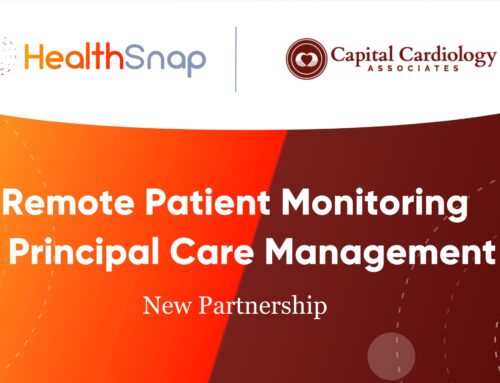Computers have always been objects of unlimited potential, especially in the imaginations of those who work with them. In the early days, pioneers of computer science debated whether the end goal of this new field was to expand human capacity with augmented intelligence or completely replace it with artificial intelligence. In popular culture, fictional “characters” like HAL 9000 from Space Odyssey and C-3PO from Star Wars brought to life a future where computers acted as sentient beings, to both the benefit and detriment of those around them.
We live and work in a time where much of that incredible potential has been realized—never before has the future seemed so present. Artificial intelligence and its many branches and subfields underly the technology and apps that have already revolutionized the way we bank, shop and even travel. In healthcare, artificial intelligence and advanced analytics are just beginning to fulfill their potential to transform medicine, cut billions of dollars in wasteful spending, and, most importantly, save millions of lives.
As computer science and advanced analytics become increasingly central to innovation in the medical and healthcare sectors, we thought this would be a good opportunity to demystify and provide context to some of these exciting new technologies. While vocabulary can be fluid and ever-changing, we hope this overview helps to put some of these new terms and ideas into perspective.
Artificial Intelligence
Put simply, artificial intelligence (AI) is an umbrella term that encompasses the broad category of methodologies and techniques by which machines perform tasks and activities that would otherwise require the application of human intelligence. In its simplest form, AI can act as a rules engine, applying user-defined logic and parameters to streamline a decision-making process. For example, a rules engine might be configured to alert clinical staff if a patient’s biometrics exceed critical values; or it might narrow down a diagnosis based on the symptoms a patient displays by mapping to a database of validated symptom and disease data. This useful technology has been around for over a half-century and, in the early days of computer science, would have been categorized as intelligence augmentation rather than artificial intelligence.
Today, cutting-edge AI goes well beyond the logic-based rules engines described above to not only perform some of the functions that a sentient human might perform but also perform as a human. AI chatbots have moved beyond simply recognizing keywords to understanding the subtleties and nuances of casual conversation, streamlining administrative tasks like scheduling and billing while also improving patient experience. In image-based medical disciplines like pathology and radiology, AI models and algorithms are increasingly able to recognize patterns and identify abnormalities as well as (or sometimes even better than) human physicians. Recent achievements in screening for diabetic retinopathy and detecting lung cancer have begun to provide critical decision support with the potential to save countless lives.
Machine Learning

Early AI was limited by manually entered values, weights, and parameters—a computer might diagnose a rare disease or predict a drug interaction faster than any human could, but only if the model had been manually configured with relevant diagnostic or interaction parameters. Machine learning (ML) is a subset of AI that allows computers to independently generate models by analyzing large datasets without direct guidance from humans. ML analyzes curated datasets to identify connections between objects (exposures) and labels (outcomes) in a structured learning environment, or discover its own associations between objects in an unstructured learning environment.
Because of ML’s adaptive nature, it is largely dependent on access to various types of datasets. Training datasets are used to develop the model, validation datasets are a subset of the training dataset used to measure the accuracy and skill of the model, and test datasets provide an opportunity to assess the model with independent data unassociated with any of the training datasets. There are several widely used platforms and toolsets for developing ML models, but as with any analytic tool, an ML model is only as good as the data and methodology it is trained/validated with.
Natural Language Processing
We’ve written before about the challenges of unstructured health data. While free text notes and medical imagery can provide critical insight into a patient’s condition, this kind of unstructured data is challenging to aggregate or analyze at scale without resource-intensive transcription and translation into a more structured form. This is where natural language processing (NLP) comes in. As a discipline within artificial intelligence that focuses on understanding human interaction and language meaning, NLP allows computers to understand and categorize unstructured data by deriving meaning from natural language, imagery, and other forms of unstructured or unstandardized data. NLP models can work hand in hand with other analytics tools to mine huge databases of previously inaccessible unstructured databases to identify population-level trends and flag individual patients for manual review.
Advanced Analytics at HealthSnap
HealthSnap is first and foremost a healthcare company. Our technology is driven by patient, clinical, and business needs with the aim of improving health outcomes and empowering providers to deliver effective, efficient care and services to our customers. We use many of the technologies described above to translate lifestyle data into a standardized Lifestyle Profile, deliver actionable dashboards to providers, and identify at-risk patients for just-in-time preventative care. The future of healthcare technology is at hand and HealthSnap is committed to leveraging the most cutting edge, innovative technology to benefit our customers and their patients!
Sign up free to easily understand and remotely monitor your patients’ lifestyle health!






